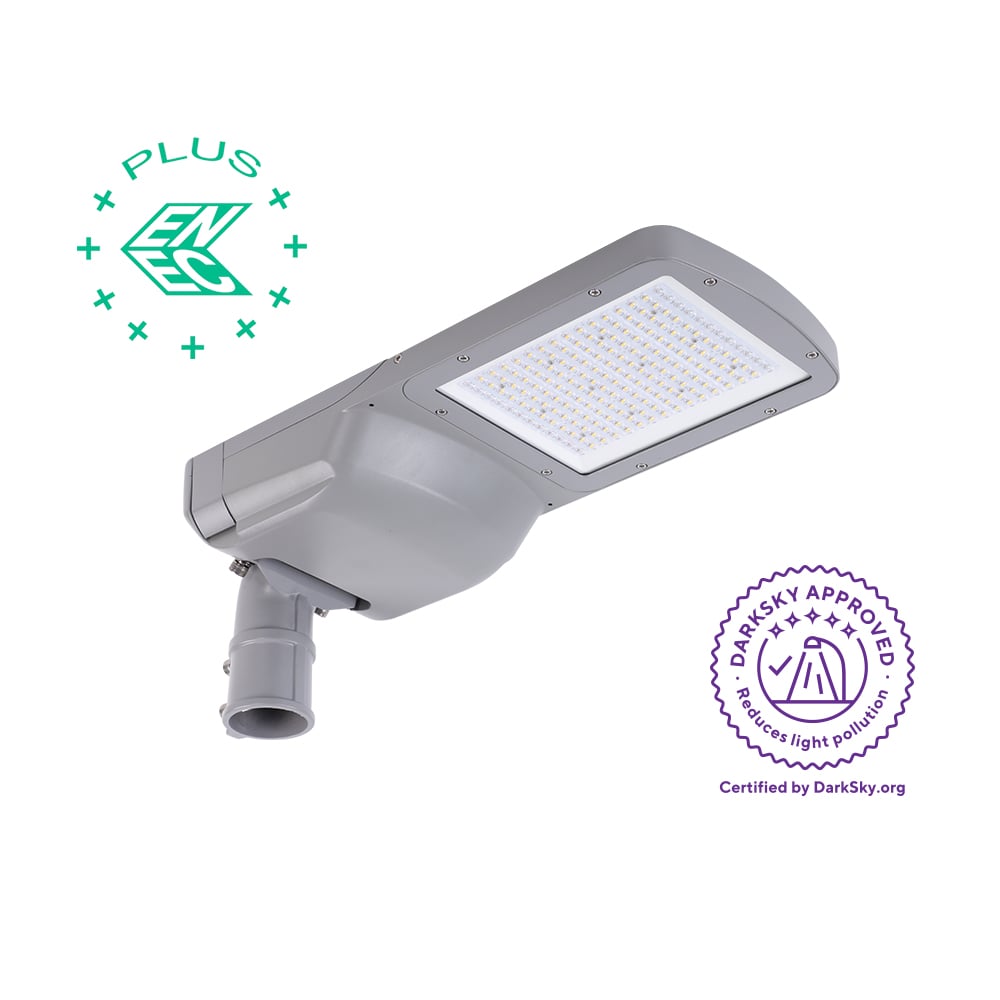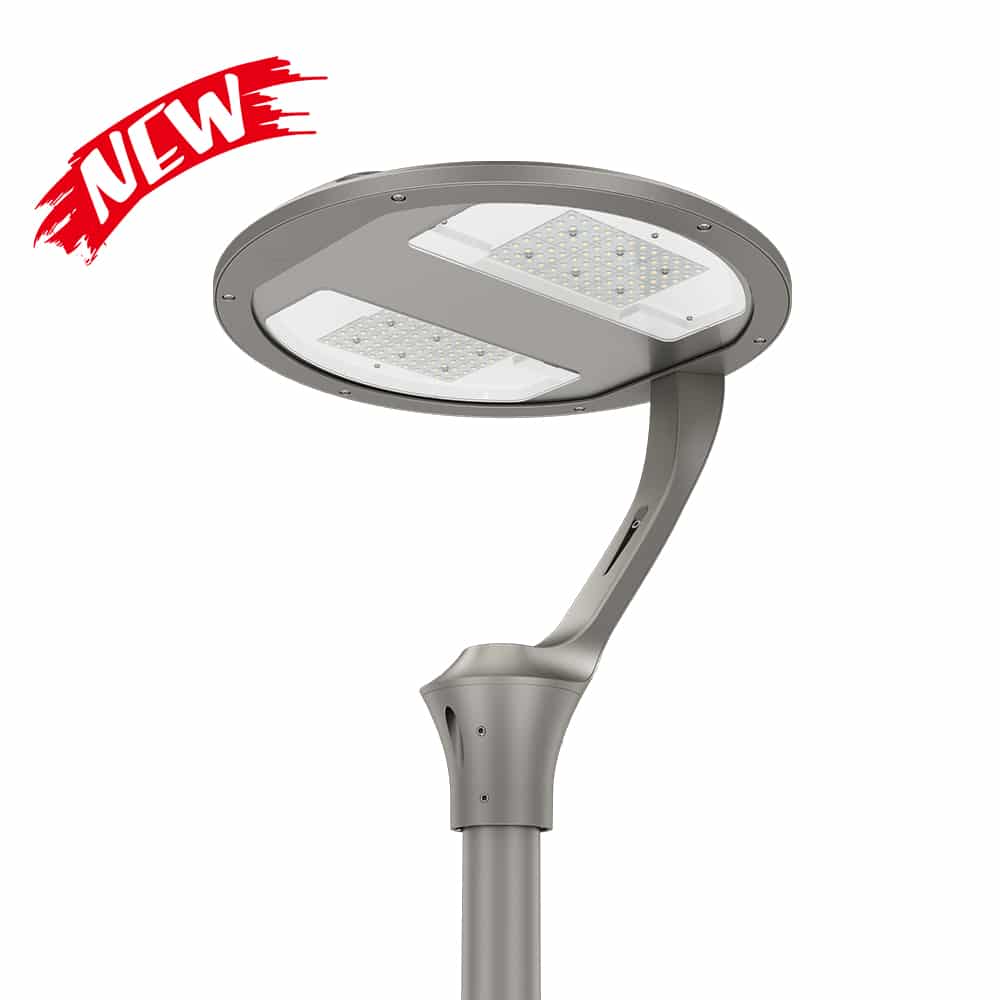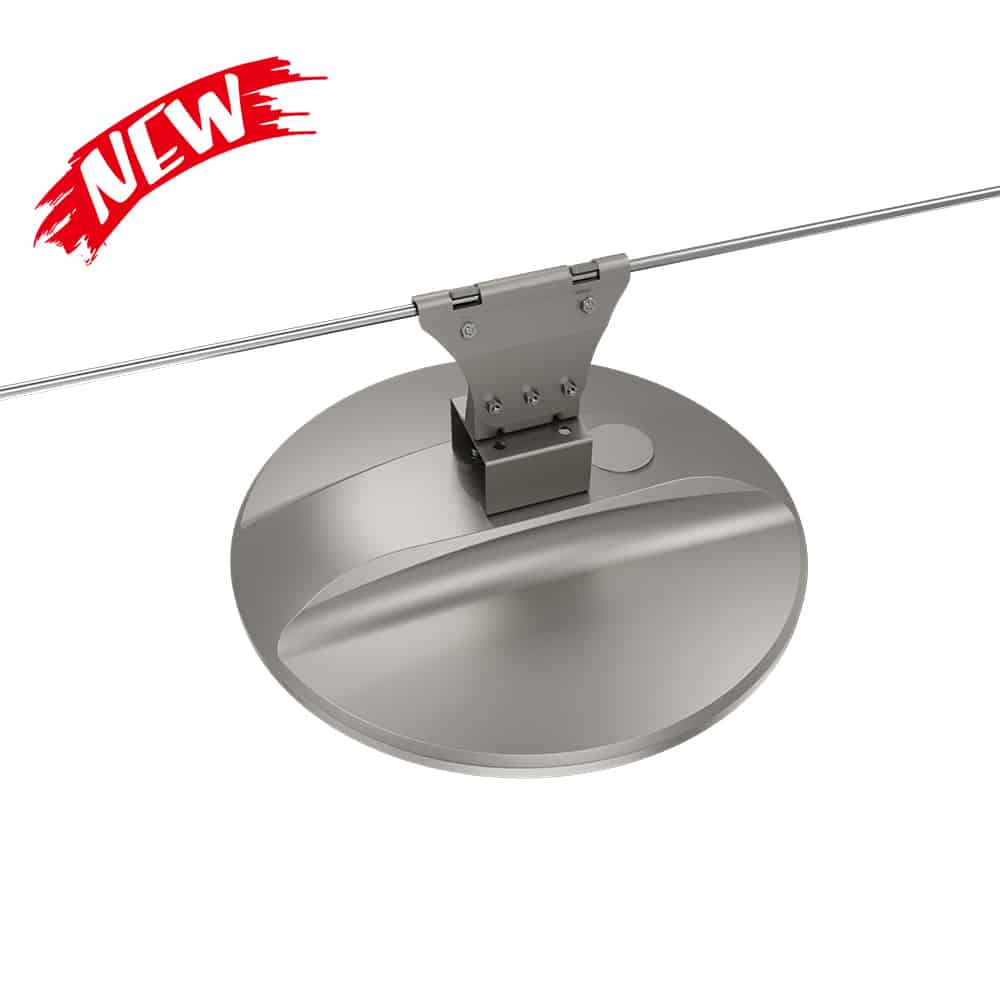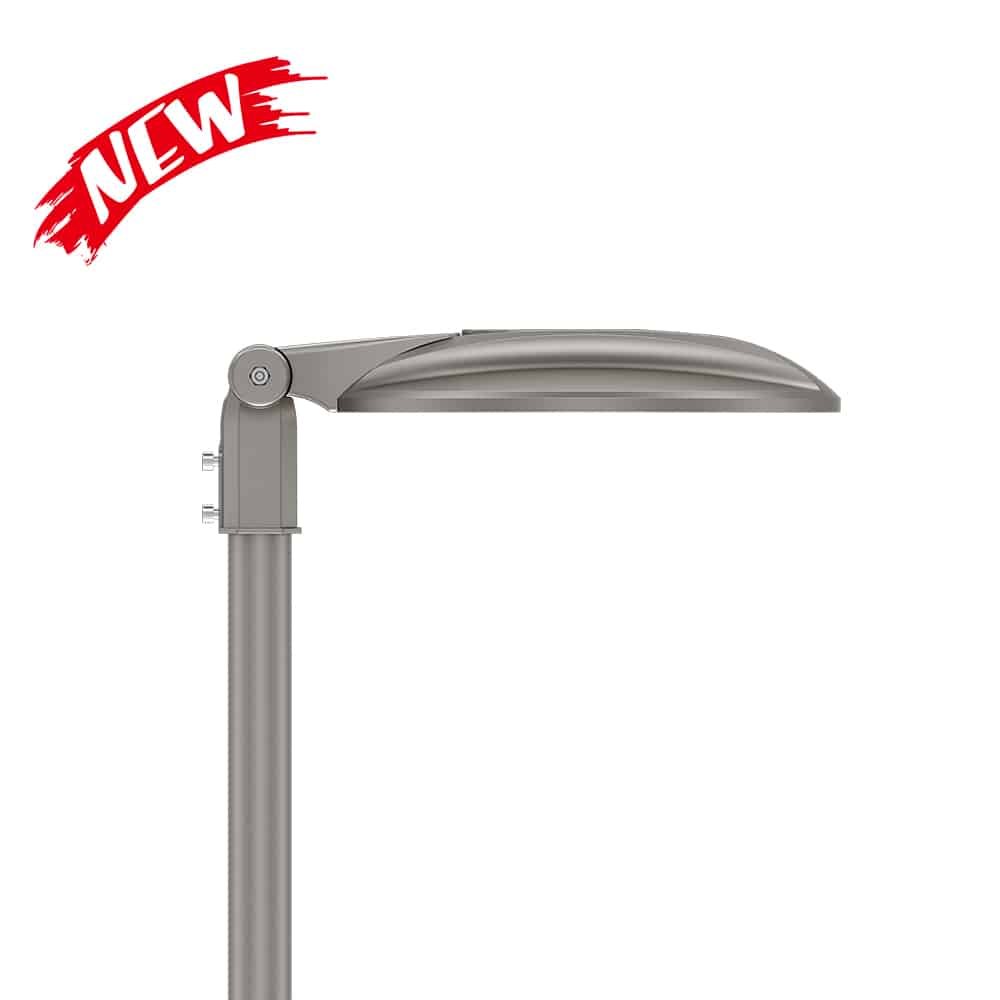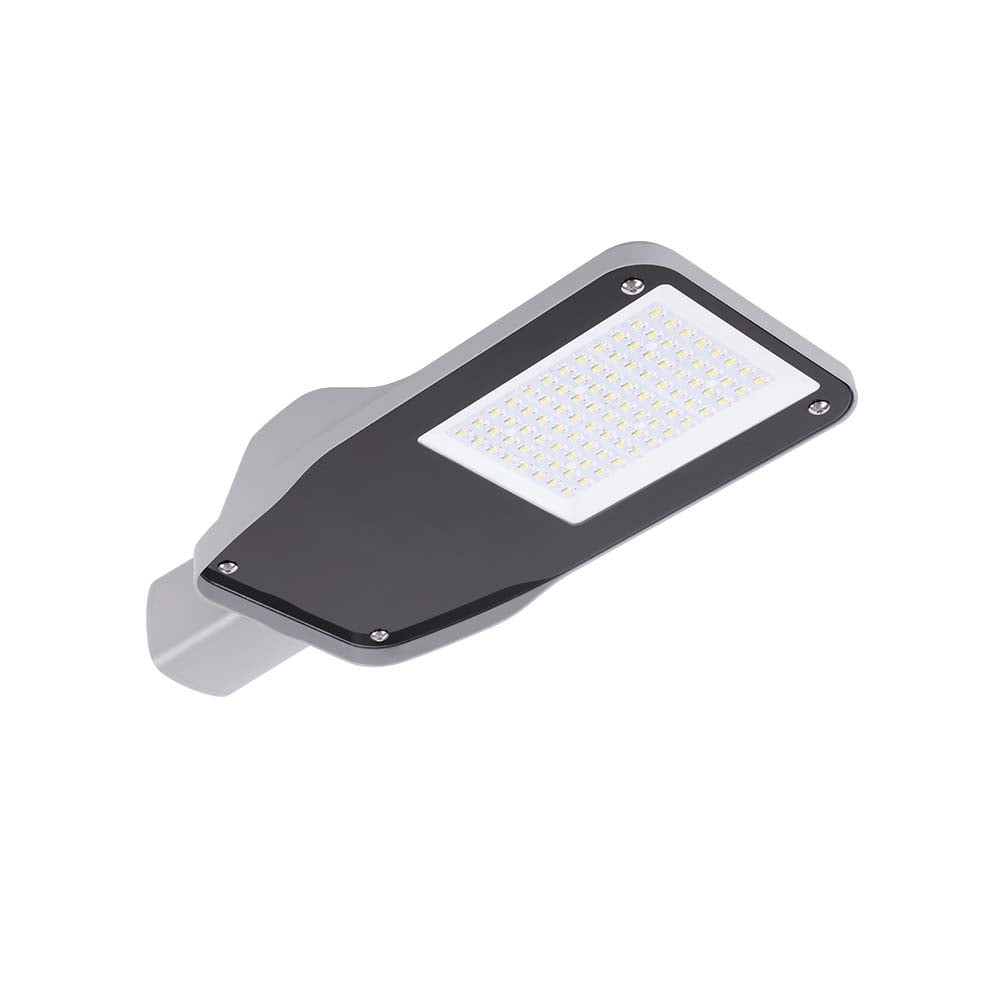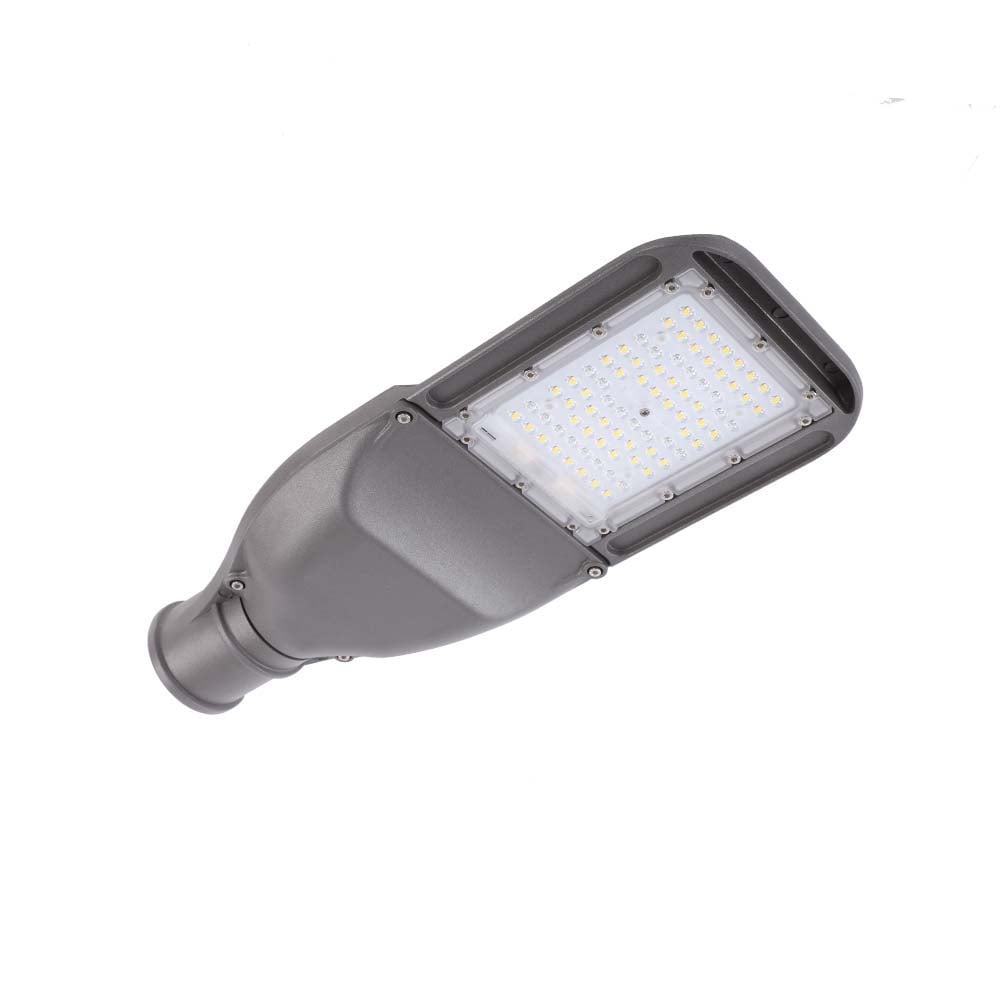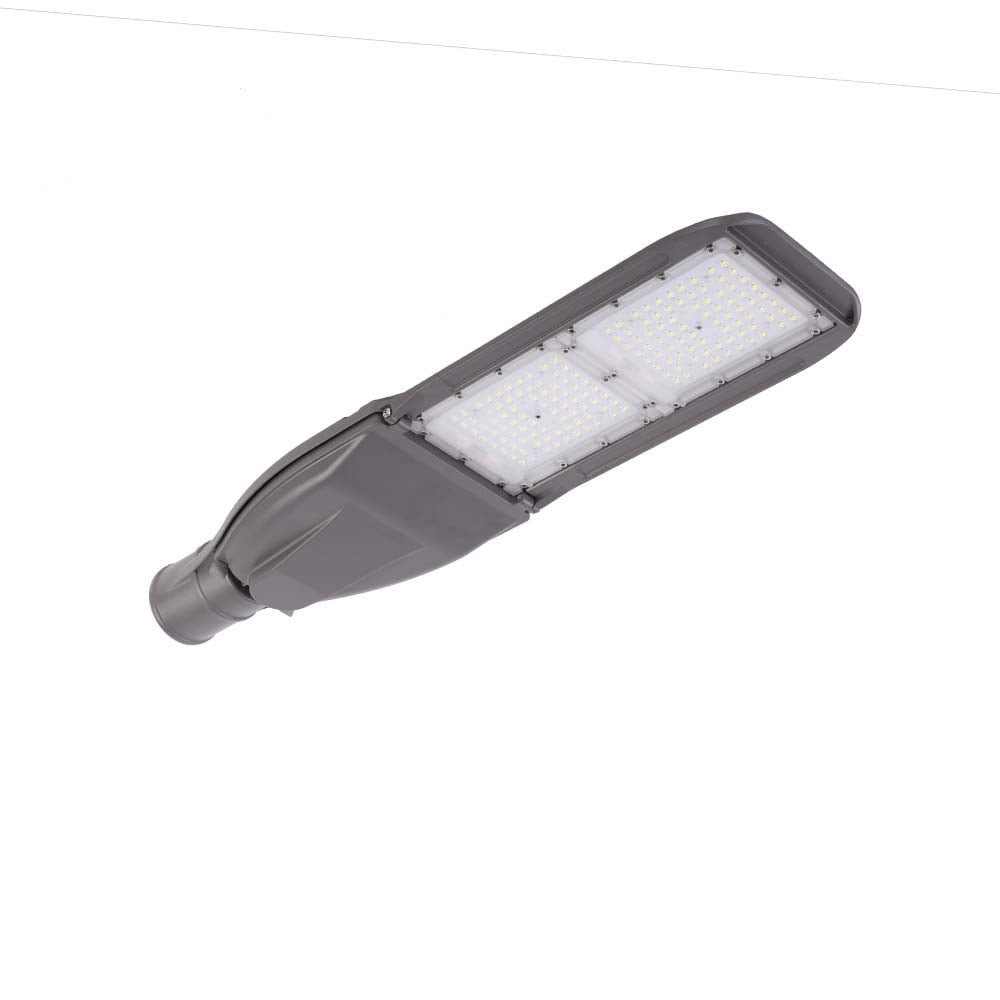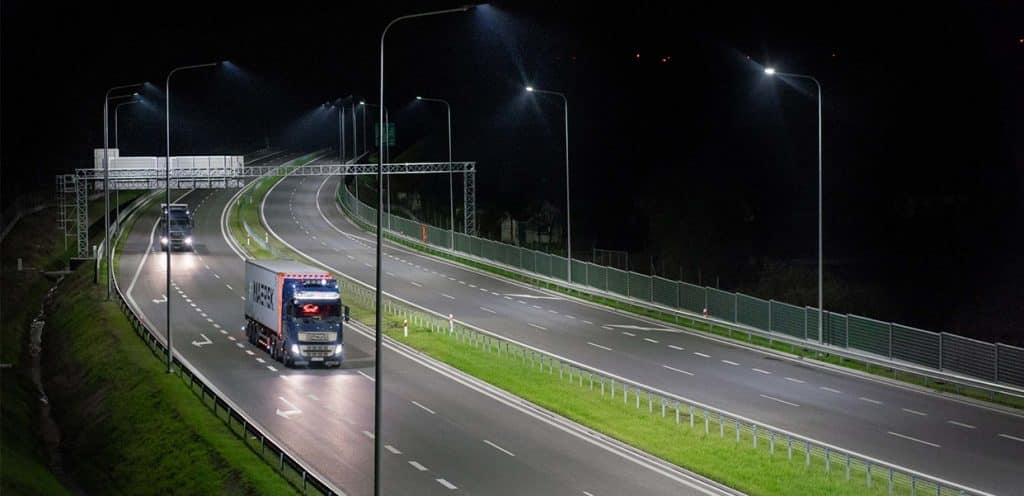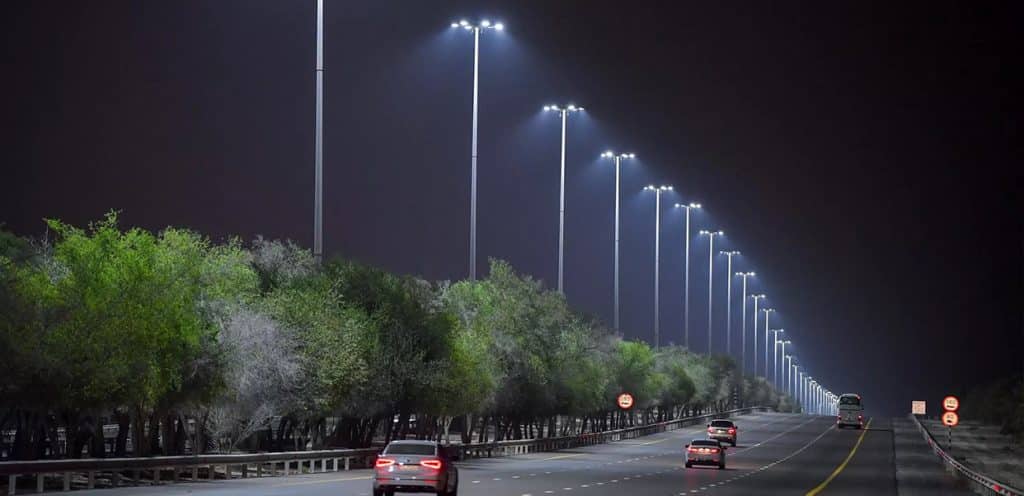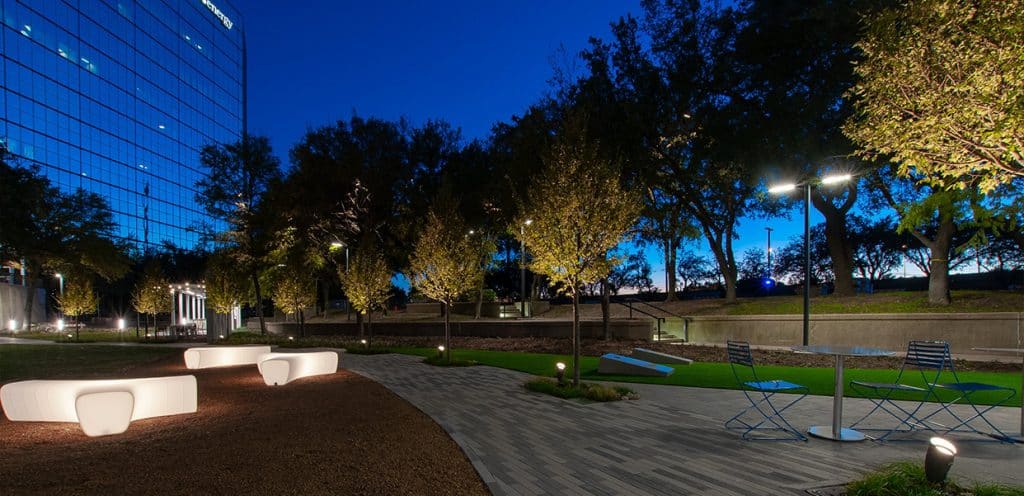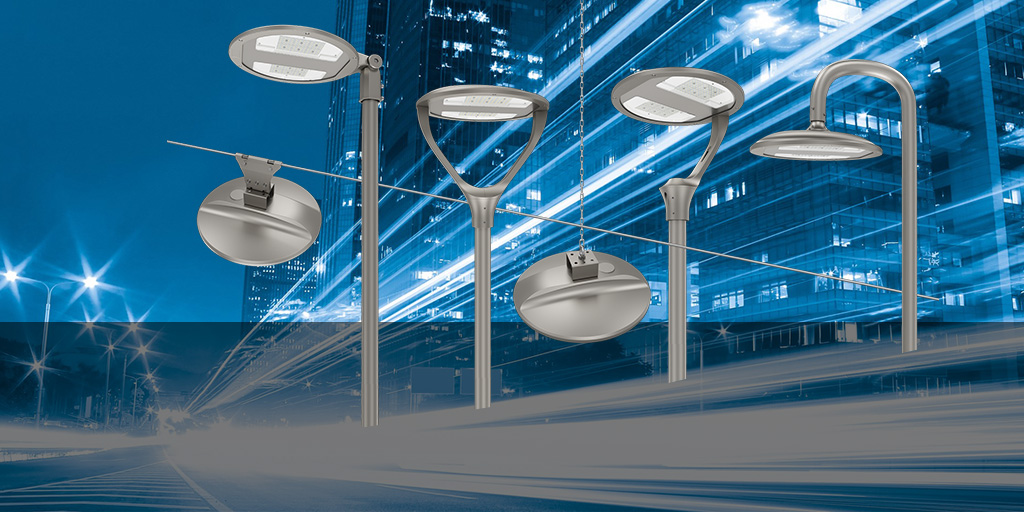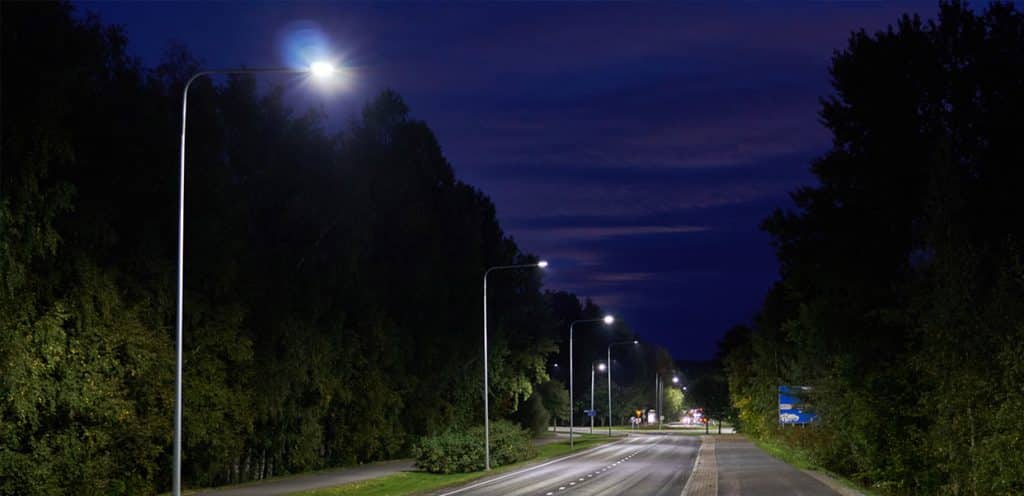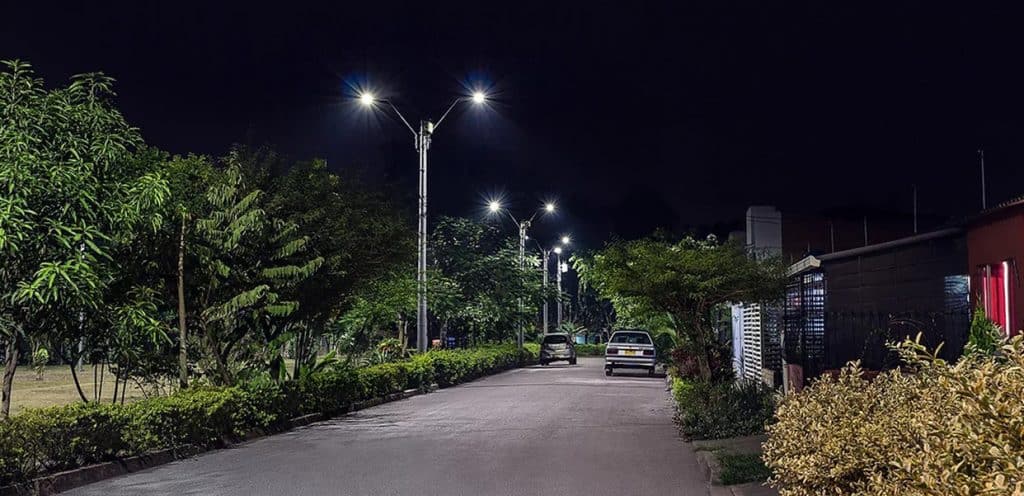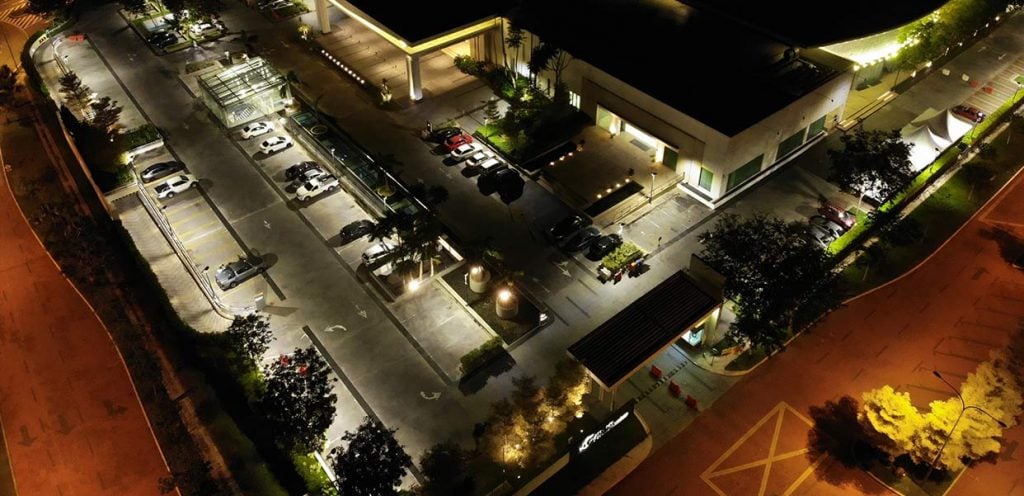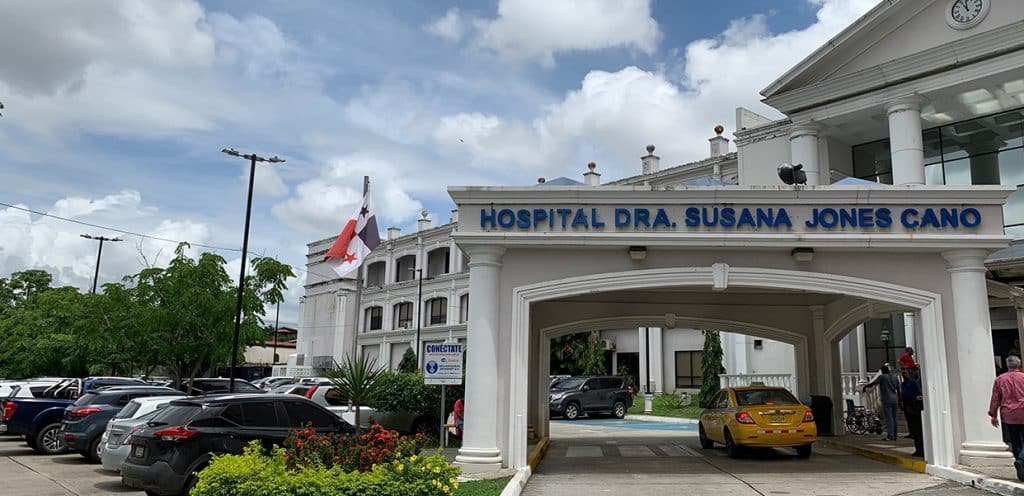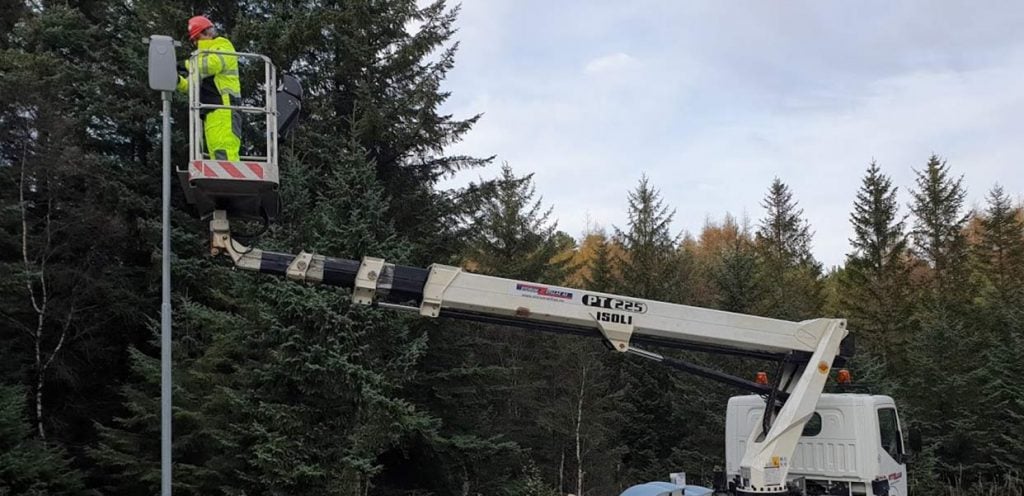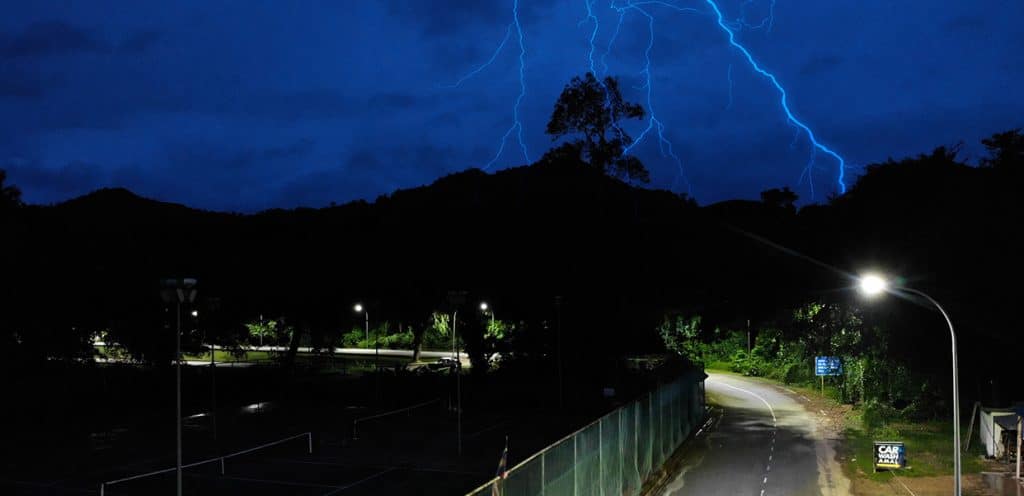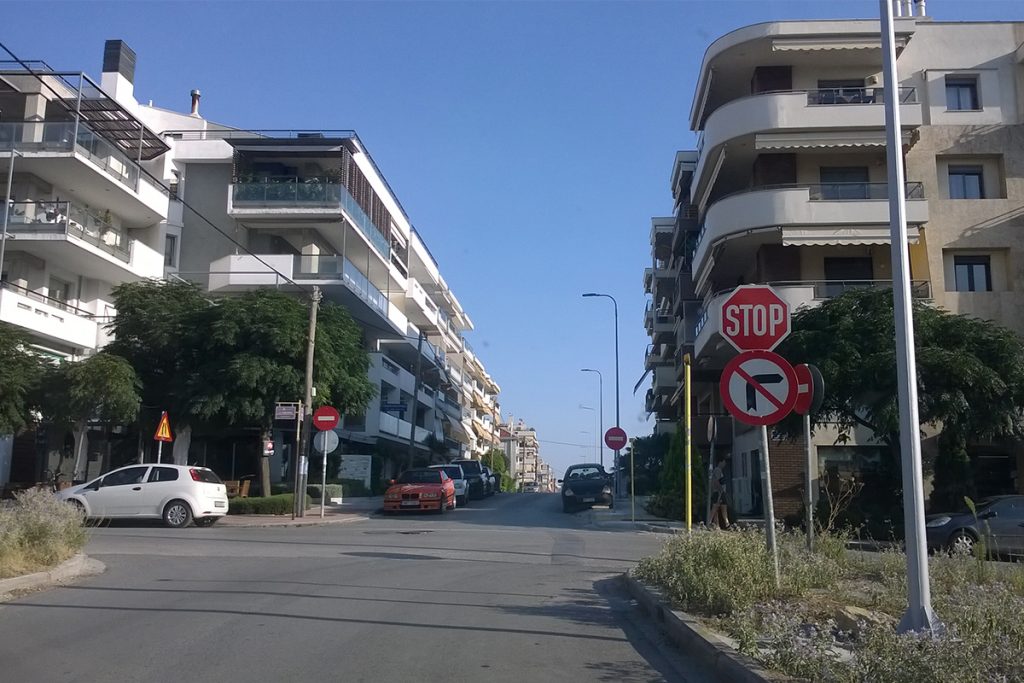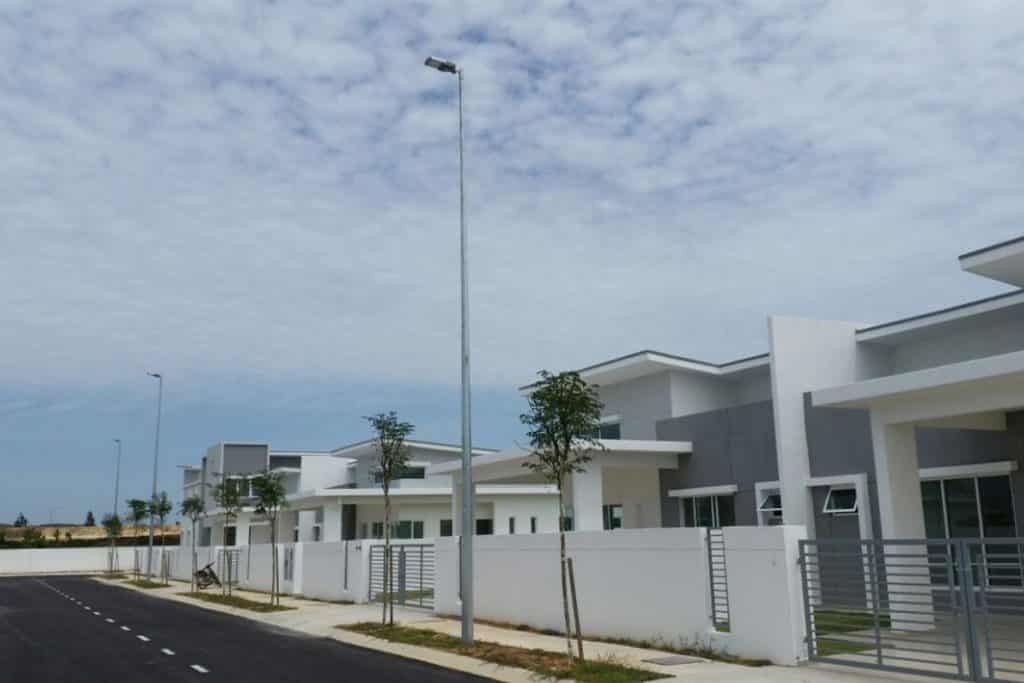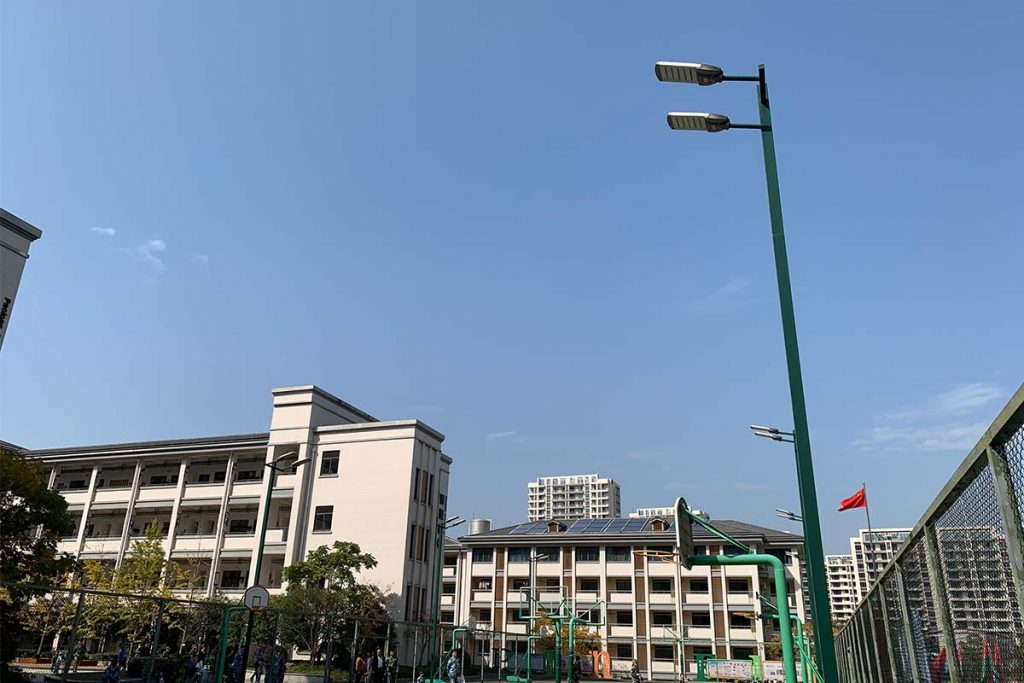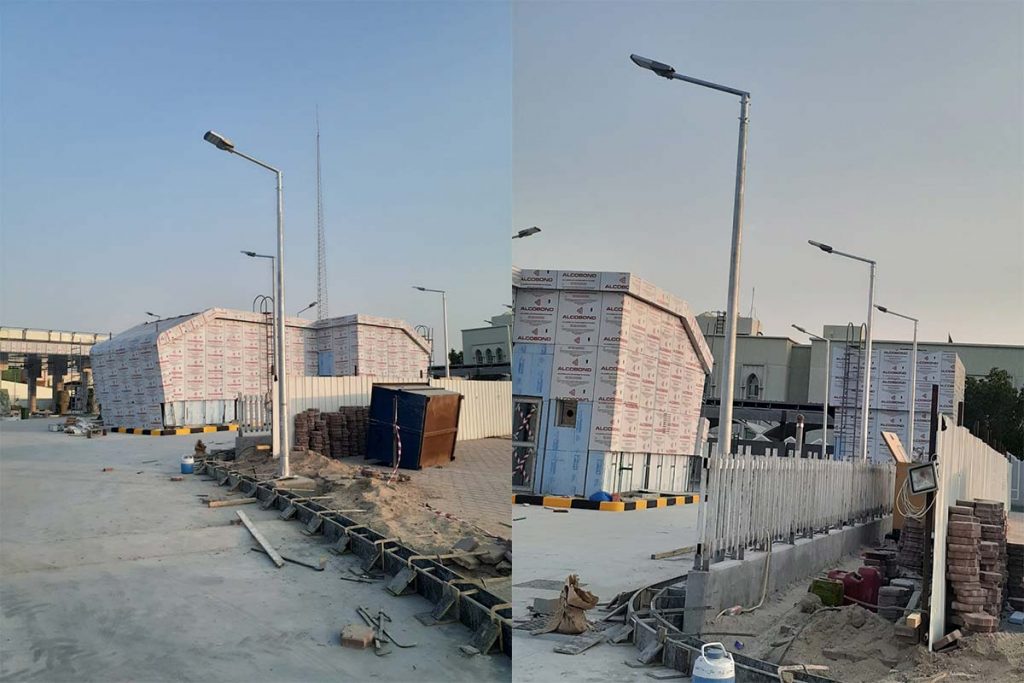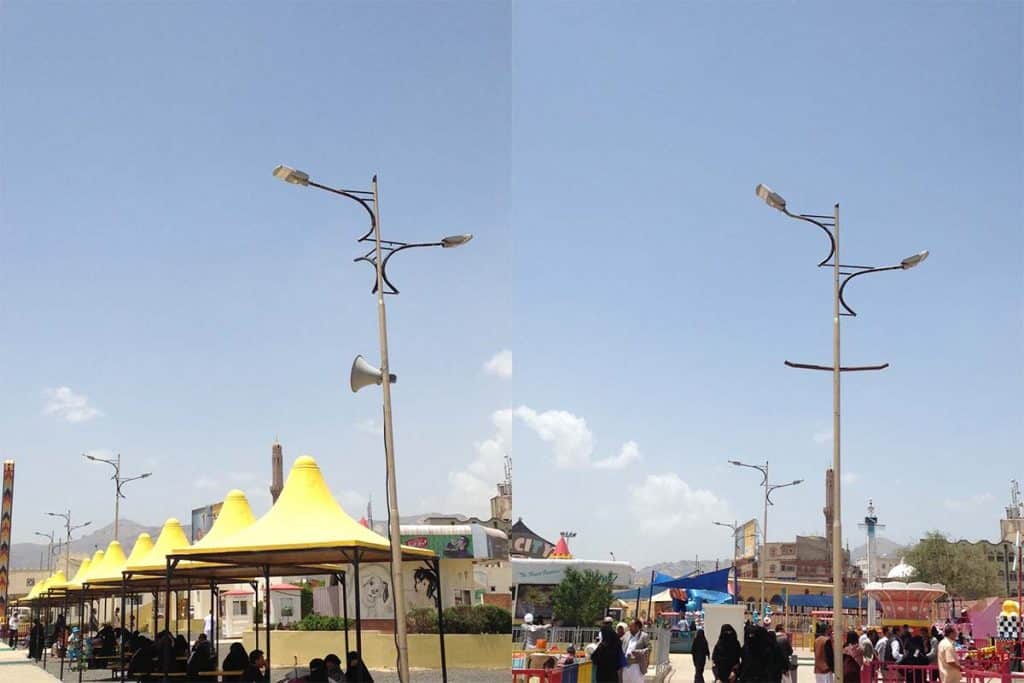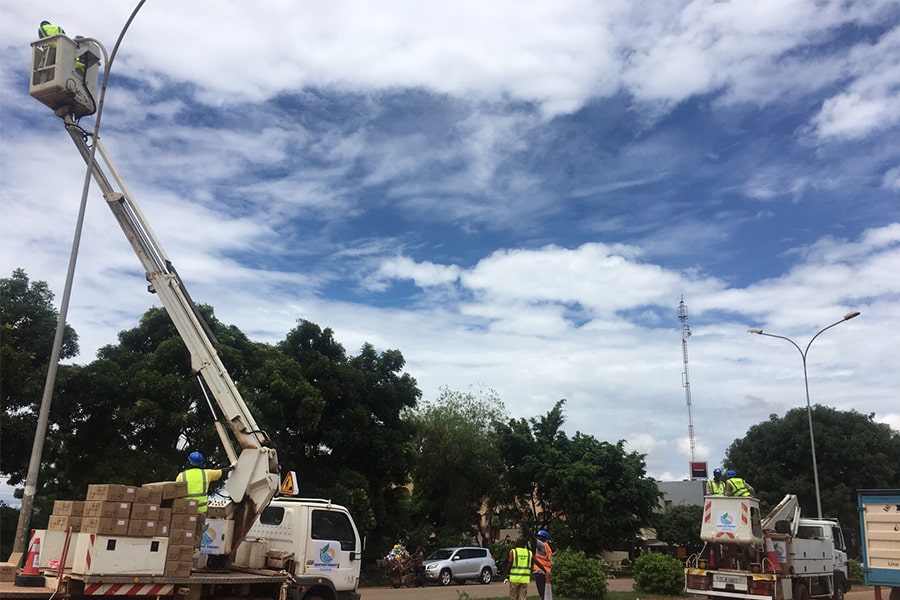Reduce lighting pollution with street light design
Reduce lighting pollution with street light design
Introduction
Much of the environmental pollution on Earth comes from humans and their inventions. Although various technologies have brought convenience to human life, such as cars, plastics and lighting. But now all kinds of problems are coming, such as car exhaust is the main source of climate change, and plastic is flooding our earth (soil and ocean). Lighting makes life easier at night (street lights guide us home, factory lighting keeps us safe, and home lighting keeps our homes comfortable and bright), but it also has a negative impact on the environment. Light pollution, the excessive or inappropriate use of outdoor artificial light, is affecting human health, wildlife behavior, and the natural environment.
Light pollution is a global problem and is mostly caused by sky glow. Sky glow is the brightening of the night sky due to the lighting of cars, street lights, offices, factories, outdoor advertising, parking lot and buildings, mainly in urban areas. The image below is a satellite photo taken by NASA in 2016 (via a computer-generated world map of night sky brightness). The atlas, available online at NASA’s associated site (https://earthobservatory.nasa.gov/features/NightLights), shows how and where our planet is illuminated at night.
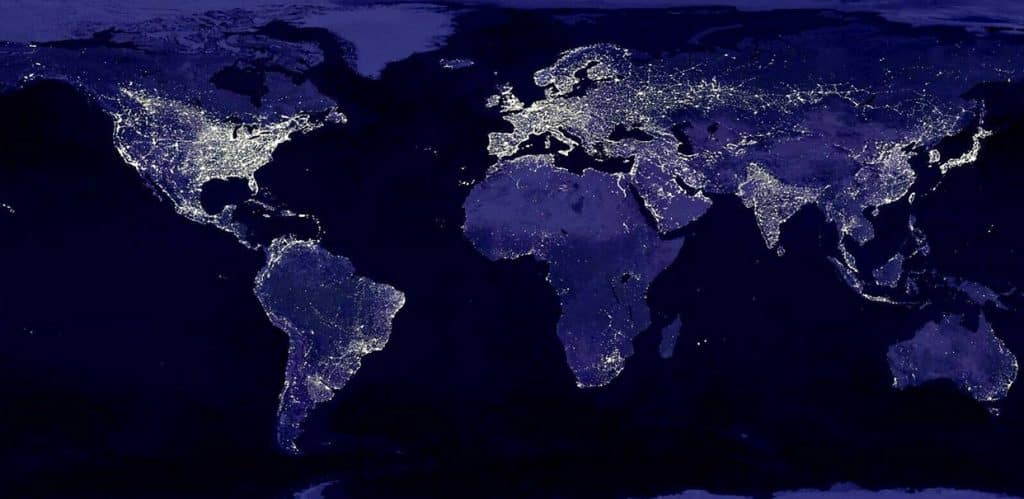
What’s lighting pollution?
Light pollution is produced by the direct or indirect introduction of artificial light into the environment associated with human and animal activities. Excessive artificial light is defined as a pollutant because its presence in the environment may pose a risk to people’s health, people’s quality of life, and the protection of the environment. Light pollution is related to the waste or misuse of artificial light, including the following:
1. because the target is over-illuminated
2. because light escapes directly or scatters to the horizon or sky
3. because the target is illuminated at an unnecessary moment
All of the above have changed the natural darkness of the night, negatively affecting organisms and people’s health.
Impact of lighting pollution
Effects on human: Artificial light can wreak havoc on the natural body rhythms of humans and animals. Light at night can disrupt sleep and disrupt circadian rhythms. An internal twenty-four-hour clock that directs diurnal activity and influences physiological processes in virtually all living organisms. One of these processes is the production of the hormone melatonin, which is released in the dark and suppressed in the presence of light. Increased light at night reduces melatonin production, which can lead to sleep deprivation, fatigue, headaches, stress, anxiety, and other health problems. Recent research has also shown a link between lowered melatonin levels and cancer, while there are studies on the potential risks of nighttime light exposure. Blue light has been shown to reduce melatonin levels in humans. Blue light is found in cell phones and other computer equipment, as well as in light-emitting diodes (LEDs), which are popular for home, industrial and urban lighting because of their energy efficiency and long life.
Effects on Animals: Studies have shown that light can disorient and confuse animals. Light pollution continues to affect animal behavior, such as migration patterns, waking sleep habits, and habitat formation. Because of the light pollution, it can lead to the loss and death of turtles and birds that would otherwise be guided by the moonlight during migration. As a result of light pollution, large numbers of insects are attracted to artificial light and die, while birds and other animals that rely on these insects as their main food source are also affected.
Principles of good street lighting
Lighting should have a clear purpose, i.e. useful
Before installing new lights or replacing existing fixtures, we must evaluate whether the lighting is really necessary. If there are alternatives, we can choose on demand. For example, using reflective paint on signs and steps, we can reduce the installation of some outdoor lighting fixtures.
Lighting should have well-defined areas, i.e. directional
Road lighting should illuminate the road surface without affecting the greening and residences on both sides of the road. Stadium lighting should illuminate the stadium without affecting nearby residential areas. We suggest that when designing lamps and lanterns, we should limit the emission of light to the upper hemisphere, and the beam should hit the ground as much as possible, which means we should make sure that lateral light distribution is designed based on width of road and height of street light installation.
Lighting should not exceed necessary illuminance, i.e. low level
Lighting regulations have specific illuminance requirements for various areas. For example, street lighting requirement standard EN13201, stadium lighting standard EN12193, indoor work places lighting standard EN 12464, etc. Under the premise of meeting the lighting requirements, we should use the lowest possible lighting level. Also we need to evaluate the illuminated surfaces as some surfaces may reflect too much light back into the night sky.
Lighting should have a defined time, i.e. controlled
Outdoor lighting should have defined lighting times, using technology such as light controls, timers or motion detectors to ensure that lights are turned on when needed, dimmed when not too much light is needed, and turned off when not needed lamps. The same goes for interior lighting, through the use of dimmers, motion sensors and smart controls we can lower the lighting level or turn off the lights completely depending on the time of day and usage.
Lighting should be with a warmer CCT, i.e. less blue light
The spectrum of visible light is between 390nm-780nm. Studies have shown that light radiation between 380nm and 499nm has blue light hazards to humans and animals. Therefore, we must minimize the emission of the blue part of the visible spectrum and make the quantities limited to the lowest possible level. A low color temperature is considered to have less blue light in its spectral range. In addition, there are also regulations that have begun to limit the proportion of blue light content (light output below 500nm), requiring it to be less than 10% or less than 5%.
Recommendation for reducing lighting pollution with street light design
Using outdoor lighting as an example, we have listed a series of good-practice lighting recommendations that can minimize the impact on humans and animals. According to the main principles of the previous chapter, we believe that the installation angle of the lamp, the design of the spectrum, the lighting design, the configuration of the power supply, and the use of lamp LEDs need to be considered, and we will explain them one by one below to show how they reduce lighting pollution.
a. Low angle direct light
Avoid shooting light at angles above the horizon to the night sky. First of all, choose a solution with glass or sunshade for the lamp to reduce its upward or backward emission. Public lighting allows the lamps to be installed in the middle of the road, which can facilitate the lamps to have a good light distribution on the lateral distribution. If the lateral distribution is not good when the spectrum is under-designed, 0-15°tilting angle isn’t allow which may throw light into the sky.
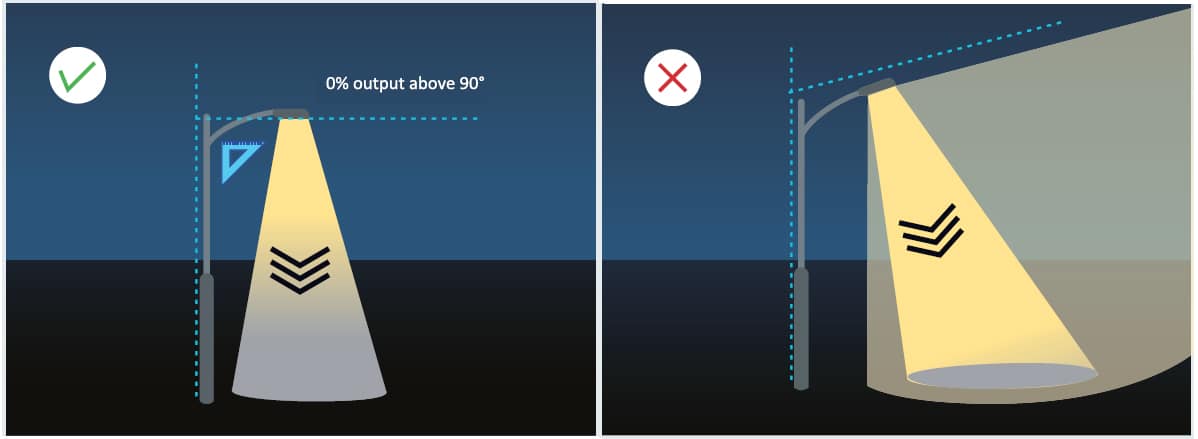
b. Maximize the application of light to the illuminated surface
A reasonable lighting distribution should concentrate the light beam of the lamp on the useful area that needs to be illuminated, and not irradiate the adjacent area that does not need to be illuminated. Utilization is a measurement that can assess how well the light emission is directed to the useful area. It can tell us how much light is projected where it is useful and how much is unnecessary and creates light pollution. For regular lighting, we recommend utilization greater than 75%.
Luminous flux utilization (U) = sum of luminous flux received by the illuminated surface / output flux of the lamp
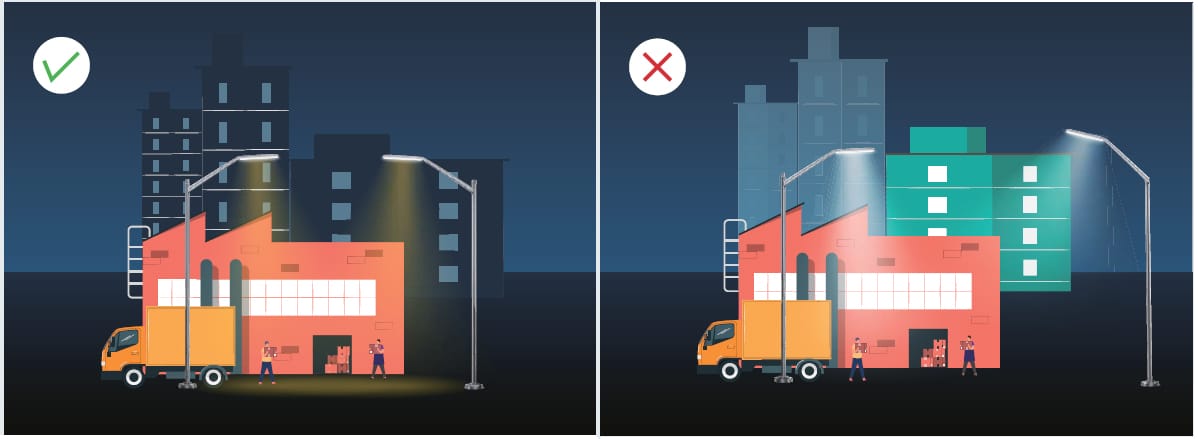
c. Avoid excess lighting levels
First of all, the lighting in different areas has corresponding lighting standards. As a project implementer, you should be clear about the lighting level you need. With lighting simulation, we should use the minimum number of fixtures and wattage to provide enough lighting in the desired area. Excessive luminous intensity levels should be avoided in the luminaires used, as well as applying lighting to unnecessary surfaces. EN12301, which mentioned in the previous chapter, has a clear explanation of the various standards of road lighting. We should follow the corresponding standards to choose the appropriate illuminance level to illuminate the road, and the actual illuminance level should be controlled within 100-120% of the minimum standard.
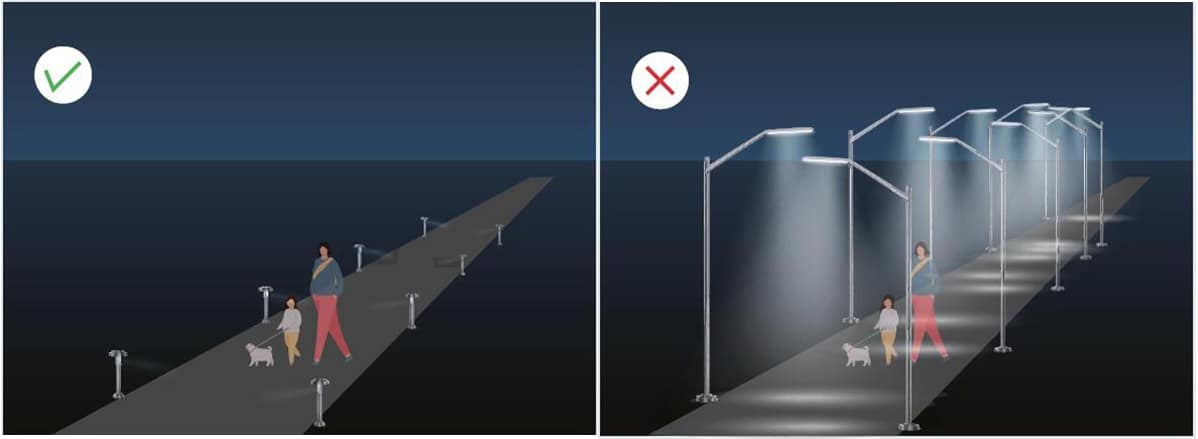
d. Application of lighting control system
As solid-state lighting has become very common in our life, the lighting control options comes up at same time. This allows them to dim the luminaires to suit lighting needs during different working hours without reducing performance. The lighting control system can adjust public lighting (pedestrians – Standard and requirements refers to pedestrian lighting and vehicles) according to the density of use of streets, squares, sidewalks, residential areas and vehicle roads through the application of sensors, pre-programmed dimming profiles or wireless signals. The more widely used on street lamps include the following:
Timer dimming: It can adjust the output of the lamp during night. This function does not require an additional external controller, only the dimming profile needs to be programmed into the LED driver, and the LED driver will automatically perform dimming according to the dimming profile. By this, we can make the sky after midnight darker.
Constant lumen output: The lumen of the light source will gradually decay, and the CLO function is used to compensate for the decay of the luminous flux during use. Through the TM21 curve, we can customize the dimming profile of the lamp (built-in driver). During the use of the lamp, the power supply will slowly adjust the output current to increase the wattage of the lamp to compensate for the attenuation of the luminous flux of the lamp. By this, we don’t need to use higher wattage of lamps when considering lumen depreciation.
Motion sensor: Motion sensor is an occupancy sensor that lights up when it recognizes that someone is in range and stays lit for a preset amount of time. This means only people is under or near the street lights, the light will work at 100% output because the motion sensor is occupied. While it’s empty in its range, it will dim the lamp or even turn off the lamps to make the street light more environmentally friendly.
Wireless control: Zigbee and LoRa controlling is well used in street lighting. If you are interested to know more, please check here.
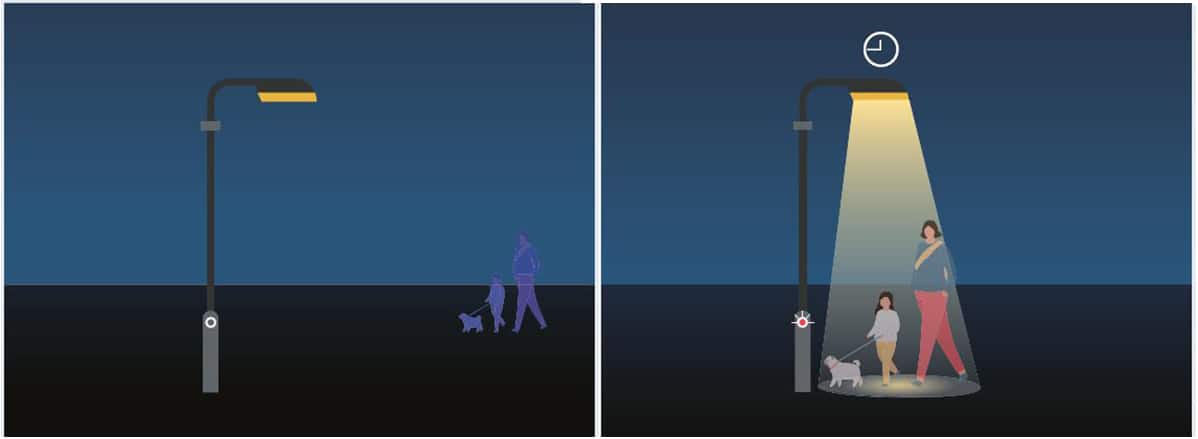
e. Minimize the use of cold light
In outdoor lighting, cold light can often give users a bright and focused visual experience. On the contrary, warm light gives people a warmer feeling and less visibility. In public lighting, you often have to choose between cold light and warm light, but considering the proportion of blue light in different color temperatures, we believe you will make your choice faster and more accurately. The color temperature of cold light is generally between 5000-6500, and the color temperature of warm light is between 2700-4000. The proportion of blue light in the latter is even smaller. At present, the color temperature of amber lighting is between 1800 and 2000 K, and the proportion of blue light is 10% or lower (based on LED chips model and correlated color temperature). There are already regulations in some countries that regulate the proportion of blue light in lamps. For example, the Czech Republic requires that the proportion of light radiation below 500 nm is less than 10%, and Chile requires this proportion to be lower.
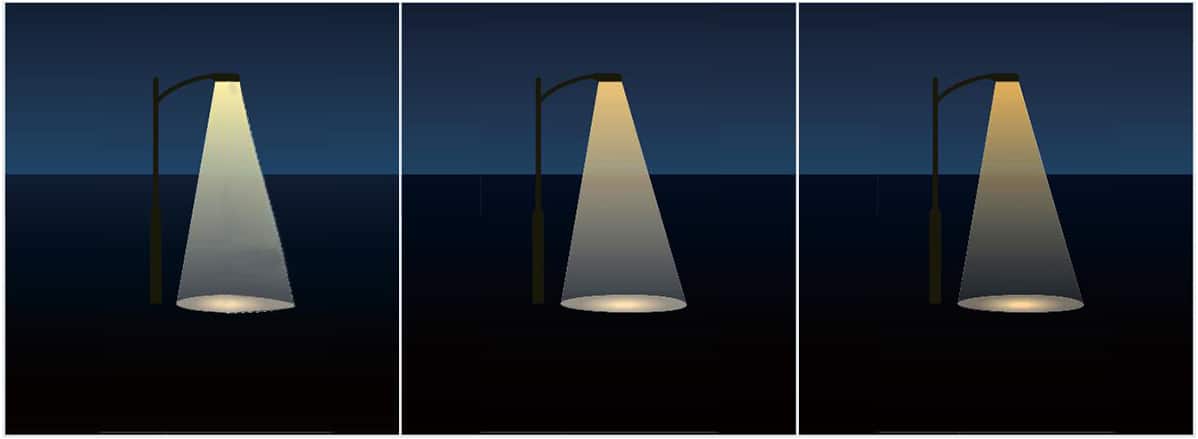
ZGSM street lighting solution
| Requirement | ZGSM solution | Photo |
| a. Low angle direct light | When ZGSM is doing project design, the installation angle is 0 degrees either it’s horizontally installed and post top installed. If the customer’s pole has a certain inclination angle, we will also recommend the customer to adjust the light-emitting surface of the lamp to the 0°horizontal plane through the angle adjustment function that comes with the Rifle series street light. | 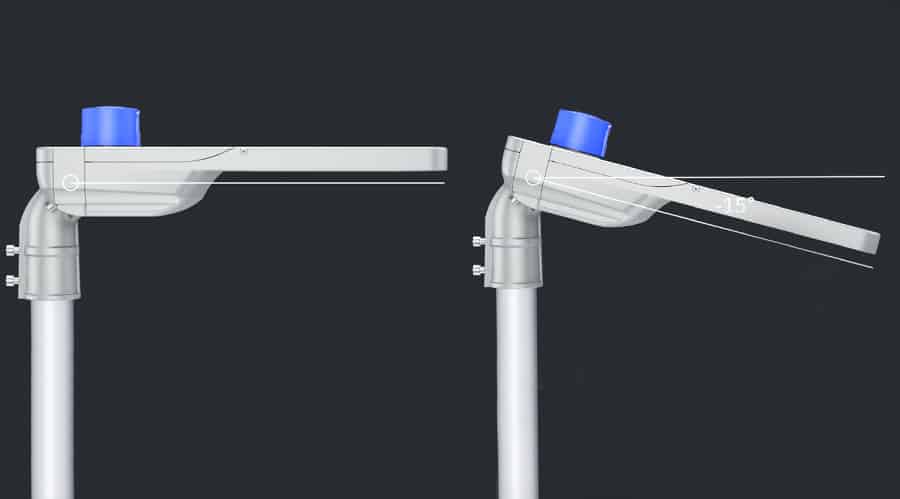 |
| b. Maximize the application of light to the illuminated surface | ZGSM’s Rifle street light provides more than 10 kinds of lighting distributions for customers to choose from. The main reason is that the road conditions of different projects vary widely. In this way, we can find the most suitable lighting distribution for the project through screening, which can not only illuminate the road, but also reduce the impact on the surrounding environment to the minimum. | 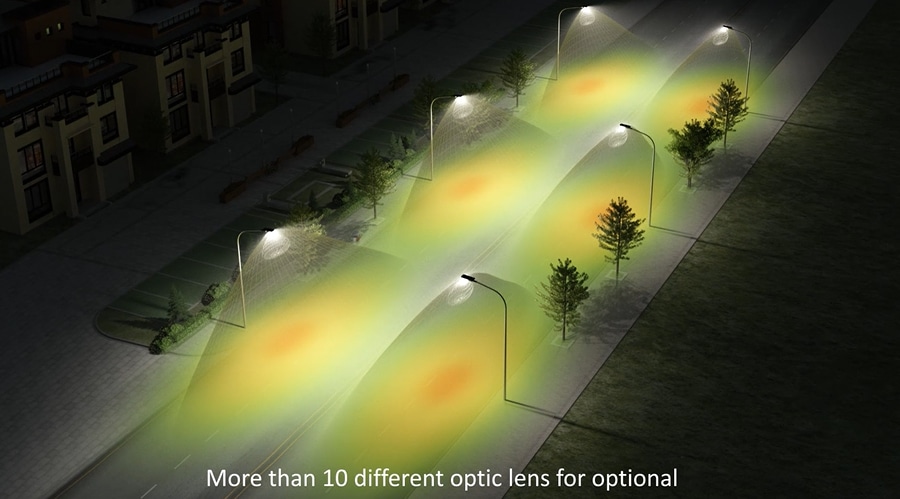 |
| c. Avoid excess lighting levels | Road projects have clear requirements for illumination. What we can do as a supplier is to select the most suitable street lights (wattage) and lighting distribution through Dialux lighting simulation, so as to ensure the needs of the project. At the same time, the illumination should not be too high (generally within 20% is appropriate). | 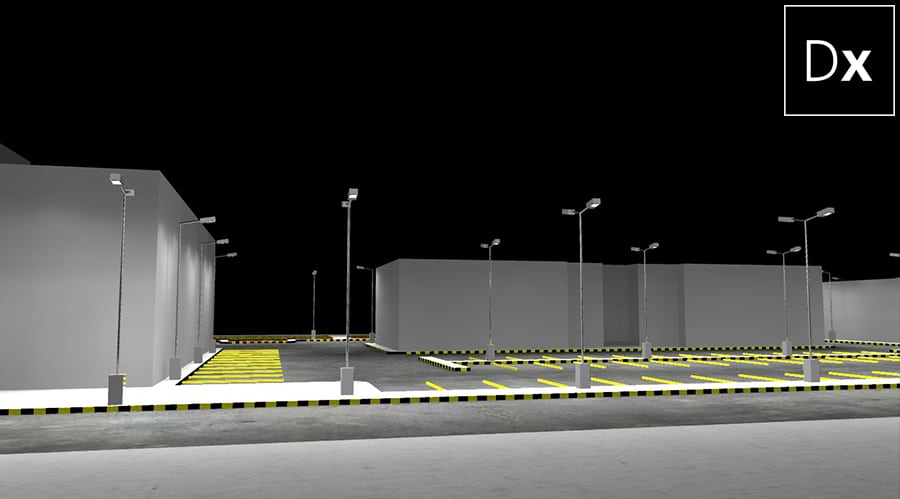 |
| d. Application of lighting control system | The lighting control solution of ZGSM includes the following three types Street light with timer Street light with motion sensor Street light with smart lighting control(smart ready) | 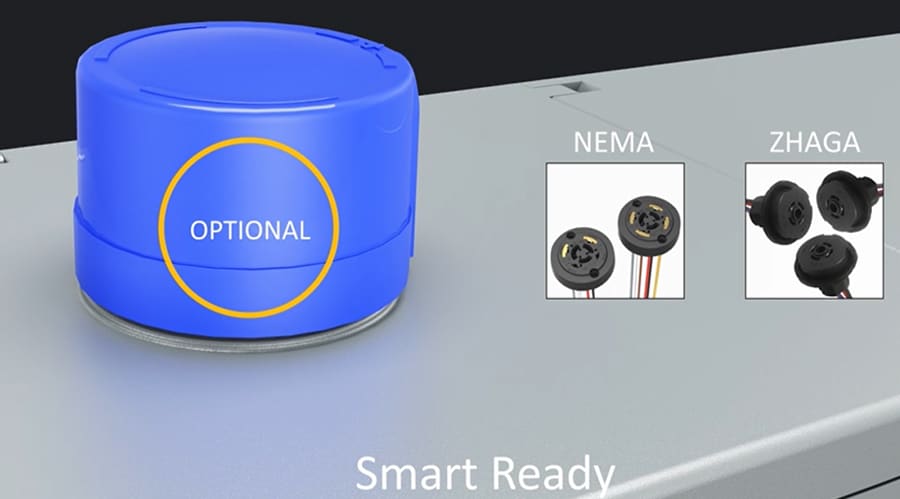 |
| e. Minimize the use of cold light | ZGSM’s solution is as follows, choose LEDs with lower color temperature, such as Lumileds 3030 LEDs with 2200K or 2700K. But as we all know, the lower the color temperature, the less the lighting brightness. If possible, you can switch the color temperature by installing two-color temperature LED chips and a power supply with two channels. | 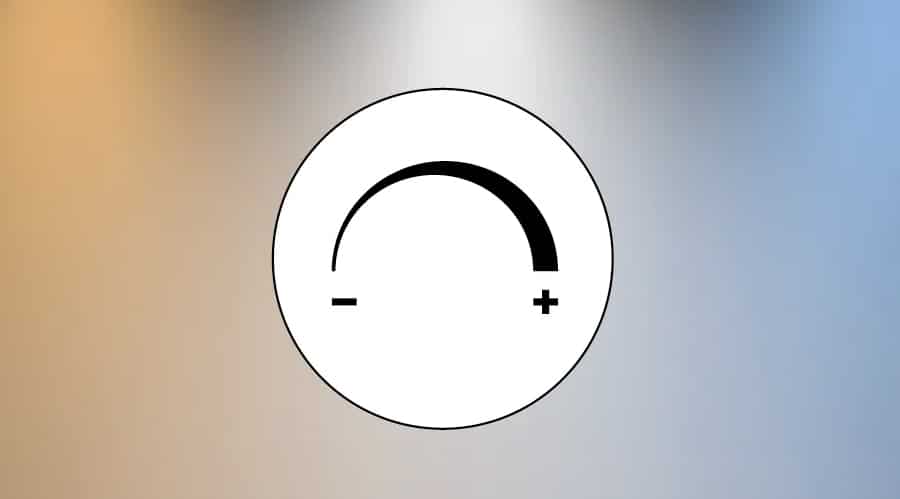 |
Remarks: The scheme and basic principle of dual-channel output driven by LED are as follows. ZGSM adopts Inventronics driver and has two independent output channels, which can be used to connect cool white light source and warm white light source. CCT adjustment can be realized by installing a dimmer on the CCT dimming cable. Of course, time dimming is also supported, which is relatively simple. For example, ZGSM street lighting project can choose 3000K color temperature output in the first half of the night. In the second half of the night, we can use this dimming mode to adjust the color temperature to 2700K or 2200K, which has less impact on the environment.

Summary
Lighting pollution is an area that needs to be solved urgently, but the infrastructure in some places (such as Africa) also needs to be updated urgently. At this time, the selection, installation and control of street lights become very important. In developed areas, when replacing street lamps, we must avoid excessive and inappropriate lighting, and if conditions permit, we can equip them with intelligent control systems. In underdeveloped areas, when installing street lamps, the installation angle and spectrum selection of street lamps should be the main factors. At the same time, try to let customers choose timer, a more traditional and practical dimming solution, so that the illumination can be reduced in the second half of the night to reduce lighting pollution and prevent them from stepping into the old path of over-illumination in developed areas, it can also save energy (lower government spending).Through this article, we hope that everyone has a certain understanding of light pollution and its hazards, and at the same time provide guidance and suggestions for street lamp designers, manufacturers, buyers and users, and try to choose street lamp solutions that have the least impact on the environment. In the case of economic development without causing too much burden on the environment.
Rated Products
Related Blogs
Related Cases
People also ask
Author introduction
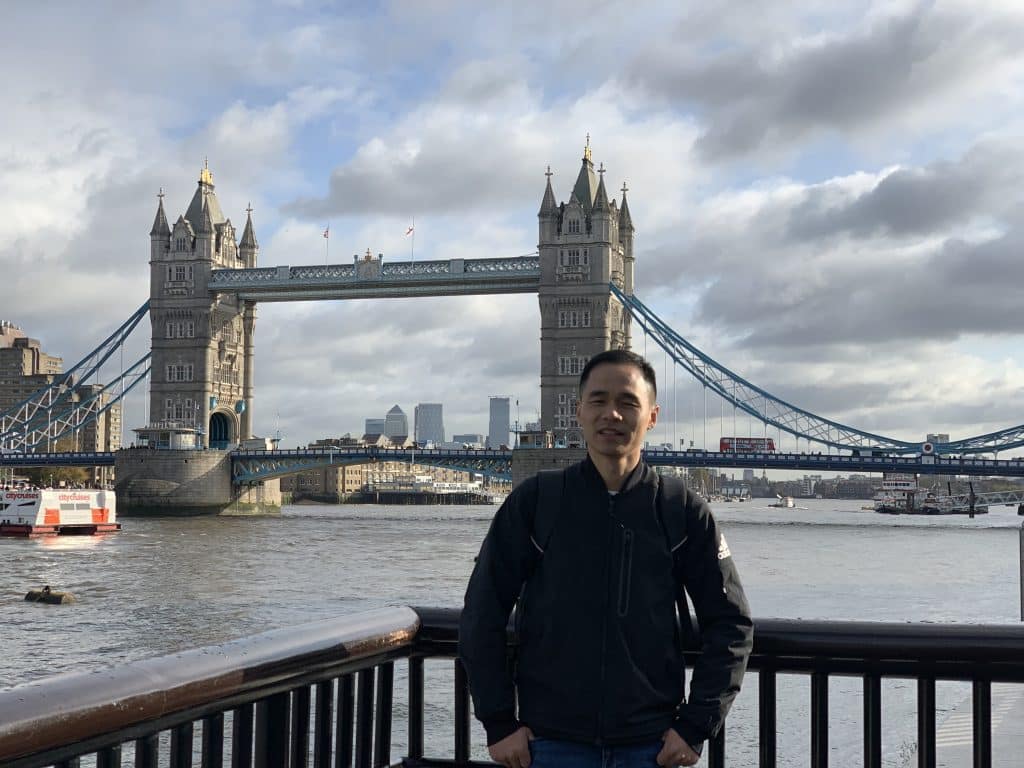
Hello Customers,
My name is Taylor Gong, I’m the product manager of ZGSM Tech. I have been in the LED lights industry for more than 13 years. Good at lighting design, street light system configuration, and bidding technology support. Feel free to contact us. I’m happy to provide you with the best service and products.
Email: [email protected] | WhatsApp: +8615068758483

